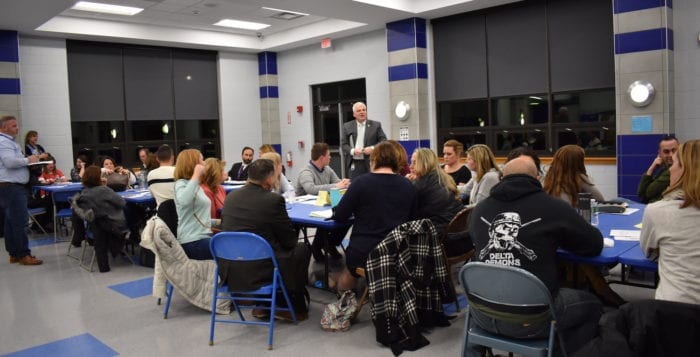April 13 was a special day for the North Shore Youth Council. The nonprofit, which provides programs and services to enrich the lives of local children, celebrated its 40th anniversary.
According to a press release from the organization, on that day in 1981, founding member Betty Hicks signed the certificate of incorporation. Their goal was to establish and implement educational, cultural, recreational and social programs for youth across the North Shore, encourage youth to participate in community activities, stimulate efforts to resolve issues and problems concerning youth, foster interaction and communication amongst other existing youth programs, and develop family life education programs to support the changing needs of families.
For four decades, NSYC has been at the forefront of youth services with a holistic prevention model that encourages children and teenagers of all ages to stay out of trouble and develop the life skills necessary to become responsible, successful adults.
Based right next door to the Joseph A. Edgar Intermediate School at 525 Route 25A in Rocky Point, NSYC services over 1,200 individuals annually, while offering programs in school-age childcare and middle school drop-in, enrichment, recreation, counseling, social skills and mentoring services that adapt to fit the changing times and needs of families.
“We’ve been a unique agency from the start, but our ability to adapt and even expand our services during this pandemic made us even more of a critical resource,” Robert Woods, NSYC’s executive director, said in a press release. “Families, children especially, have been in desperate need of stability, socialization, and mental health support, so it was important that we found every way possible to continue to be that system in place.”
Woods said the organization started off in someone’s home at a kitchen table.
In spring 1980, a group of Rocky Point and Sound Beach parents met in Hicks’ kitchen to address the problems facing young people in the North Shore communities — and the lack of available services and substance abuse education necessary for their health and wellbeing.
With rising drug abuse and teenage runaways becoming a problem on Long Island, one thing in particular became obvious to parents in the Rocky Point School District — issues with substance abuse, mental health and juvenile delinquency did not discriminate.
Problems happened in any town, in any neighborhood, to anyone. Those original six parents saw the need for community cooperation and recognized that prevention programs and strategies could help youth delinquency before it became more challenging.
And now, 40 years later, their mission statement stays true. Despite a global pandemic impacting nonprofits across the country, NSYC has been able to keep its head above the water and still provide assistance to whoever might need it.
The organization has moved many of its programs online, offered free tele-therapy, started community support workshops and even provided virtual recreation before returning to in-person services.
NSYC’s team worked with local elected officials, school district administrations and the local Rotary Club early on in the COVID crisis to bridge the gaps by providing schoolwork printing services, laptop and earbud donations, food donations, and offering its main office and recreation room as a safe and supervised place for students without Internet to work.
They successfully ran a summer camp free of COVID-19 cases, and at the start of the new school year, resumed before and after school childcare and drop-in services with numerous health and safety protocols.
NSYC and its Youth Advisory Board continue to develop youth-based initiatives that benefit the whole community, including safe trick-or-treating Halloween events, holiday fundraisers, virtual talent shows, and open mic and game nights. Like other nonprofits facing funding cuts, NSYC and its diverse staff rely on community support.
“We’re rolling out a new platform for fundraising and charitable giving,” Woods said. “We work hard to cultivate relationships with our communities and keep them engaged with us because many of these kids come back year after year and grow with us. The more we know what’s needed or wanted, the better we can prepare and provide for youth and families.”
Woods, himself, began coming to NSYC when he was just five years old. Now, he’s trying to help kids with their programs the way it helped him 30 years ago.
“I literally grew up and have just never left,” he laughed. “You know, it’s interesting to be the director of a program that helped you grow up, and I think that’s pretty unique amongst our organization.”
Right now, most of its students come to the Rocky Point location from Port Jefferson through Wading River. Woods said they’re hoping to expand.
“There’s this amazing legacy of people that have come through us,” he said. “And we want to keep it going.”















